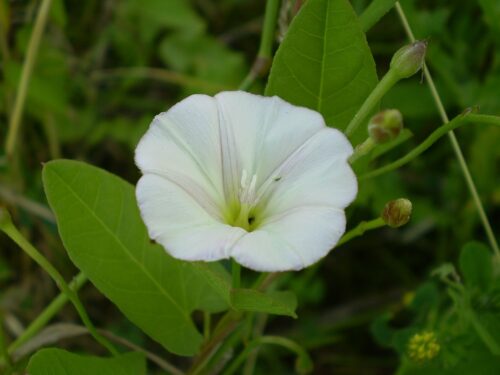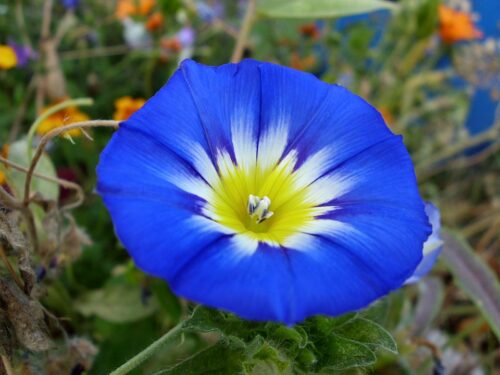Hedge bindweed and Field bindweed belong to the bindweed family. They are perennials that climb up fences, branches and shrubs. These bindweeds are among the most difficult pests to remove.
Comparable:
Hedge bindweed (Convolvulus sepium)
Field bindweed and hedge bindweed are known as:
Bellbind
Lily vine
Wild morning glory
Hedge Bindweed (Convolvulus sepium) and Field bindweed (Convolvulus arvensis) belong to the bindweed family (Convolvulaceae). They are perennials that climb up fences, branches and shrubs. The stalks of the bindweed climb in a clockwise direction. Field bindweed and hedge bindweed lose their leaves in autumn and are hardy. Field bindweed and hedge bindweed have a horizontal root system at a depth of about 50 cm, from which vertical runners find their way up. The deep-lying root system means that the field bindweed and hedge bindweed are among the most difficult pests to remove.
The large trumpet-shaped flowers of the field bindweed bloom for only one day (flowering time June to the end of October) and are usually white and sometimes pink. Those of the hedge bindweed, however, are exclusively white. The flowers of the field bindweed and hedge bindweed spread a sweet, vanilla-like scent.
Habitat
Field bindweed and hedge bindweed originate from the areas around the Mediterranean Sea. In the meantime, both winds have spread over all temperate regions worldwide.
Field bindweed and hedge bindweed are common and widespread throughout most of the UK.
Bindweed like a sunny position, preferably on disturbed soil. Field bindweed and hedge bindweed reproduce by forming runners (vegetative propagation) and via seed. Pollination of the flowers by flies, bees and bumblebees – field bindweed and bindweed are real bee plants.
Control
Field bindweed and hedge bindweed is difficult to control. Pieces of root left after cleaning easily spread out again. Manual removal of all root parts is necessary. For larger areas, the roots are best dug out with a digging fork; with a shovel the carrots are quickly chopped into pieces. Those loose pieces of root grow into just as many plants. Fortunately, the white roots are easy to spot.
Combating field bindweed and hedge bindweed is a long-term task: remove ever-emerging shoots and dig out the roots completely. A piece of land in which bindweeds grow is best covered with weed cloth, an old carpet or thick cardboard. In the absence of light, the bindweed underneath will die over time.
In professional agriculture and horticulture, field bindweed and hedge bindweed are controlled with chemical agents. The growth of bindweed in grassland is limited by frequent mowing.
All parts of bindweed are slightly poisonous; also for pets and livestock.
Dwarf Morning Glory
There is an annual relative of the field bindweed and hedge bindweed: the Dwarf Morning Glory (Convolvulus tricolor). It grows to a height of half a meter and blooms with sky-blue flowers. Available as seed and annual planting stock. She likes a sunny position, normal garden soil with a preference for light (sandy) soil and a slightly lower acidity. Not hardy.


